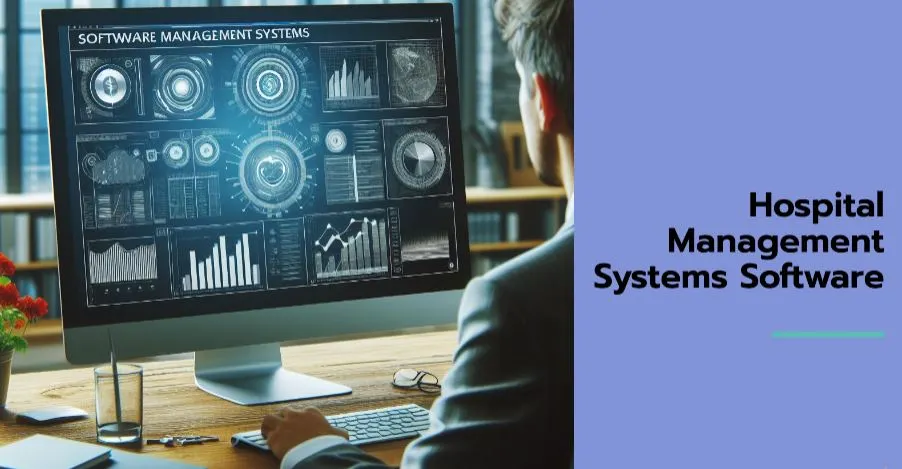Tired of large, monolithic applications that make the software development process complicated and slower?
However, designing agile and scalable enterprise software solutions requires strategic planning, which is a complex process. Adopting microservices architecture can make this process easier. This is a revolutionary approach that breaks complex applications into smaller, independent services. These manageable components help design high-quality, functional, and scalable applications with ease.
But how will you effortlessly integrate such a framework? The answer is simple: team up with an enterprise software development company. They can skillfully integrate microservices into your software development project to address changing business needs effectively.
In this article, we’ll explore the benefits of microservice architecture for enterprise software companies, including faster development and deployment.
Understanding Microservices Architecture: Enterprise Software Development Company Insights
What is Microservices Architecture?
At its core, microservice architecture offers architectural patterns for developing effective enterprise software solutions. Moreover, this software development approach helps break down complex applications into smaller, independent services. These components communicate and connect well through specific APIs and work together seamlessly.
This approach offers faster development and deployment and increases the scalability of large-scale applications.
The best enterprise software development companies focus on integrating microservice architecture to simplify developing and deploying complex applications. Moreover, this architectural style integrates independent services that are:
- Loosely coupled: Simplifies maintenance and minimizes dependencies.
- Aligned with core business capabilities: Highlights specific business needs and improves flexibility and modularity.
- Developed by small groups: Offers better efficiency and faster development.
A custom enterprise software development company can design complex and scalable software solutions by incorporating these small services.
Key Components of Microservices Architecture
Experts offering enterprise software development services focus on adopting microservices for smooth operation and streamlined workflow. Its core components make the software development process easier and more effective. These include:
1. API Gateway:
This key microservice component handles client requests and provides a route to access specific services. Simply, it offers a single point for users to access different services.
This microservice architecture component offers significant functions like caching, authentication, and rate limiting.
2. Services:
It offers self-managed components, allowing developers to build scalable and efficient enterprise software. These self-developed and deployed parts communicate through APIs, offering specific functions to design high-quality software products.
3. Configuration server:
This is the central repository for service configurations, such as API keys, database connections, and other settings. It offers configuration information that is effective for enterprise software development.
4. Service registry:
It also provides another central directory for all microservices, storing API details, metadata, and location. This component offers efficient routing by the API Gateway.
5. Monitoring and logging:
This helps manage and troubleshoot enterprise software applications. Monitoring and logging allow for the earlier detection and analysis of system errors, reducing the risk of software failure.
6. Service orchestration:
Such a component ensures strong coordination between microservices for faster development and deployment.
7. Load balancers:
Microservice architecture has load balancers to distribute API requests across different server instances.
How to Implement Microservices Architecture in Enterprise Software Development
An enterprise software development company needs to carefully plan and execute when it comes to implementing microservice architecture.
Here’s a breakdown of the key steps:
1. Defining project goal:
Highlight and document the specific goal of the project. Define the core features and functionalities you plan to integrate into your software that align with your unique business demands. This is crucial for avoiding redundancy across microservices offering specific business functions.
2. Communication and collaboration:
Prioritize communication and collaboration between developers, operations teams, and stakeholders. This ensures connection and communication between microservices for faster development and deployment. This process ensures all components align with business goals and challenges earlier in the development cycle.
3. DevOps and Continuous Integration:
Next, integrate DevOps practices and continuous integration (CI) to streamline development, deployment, and management in enterprise software development. CI automated testing and validation allows faster detection and mitigation of issues. Moreover, DevOps facilitates seamless collaboration between developers and stakeholders, enabling the faster and more consistent deployment of software updates.
4. Governance Model Establishment:
Developers should adopt model establishment to draw a clear roadmap outlining processes, roles, and responsibilities for managing the multiple microservices. This is crucial for managing and coordinating microservices, resulting in faster development and deployment. An enterprise software development company adopts this strategy to foster consistency across the software development process, allowing for swift issue resolution.
5. Data Consistency and Seamless Integration:
Adopt data consistency and seamless integration to manage and access data efficiently. This offers shared databases by designing APIs and offering consistent data structures across all microservices.
These best practices enable developers to implement microservice architecture in their enterprise software projects. By integrating this software development framework, you can leverage the benefits of faster development, easier deployments, and enhanced scalability.
Advantages and Disadvantages of Microservices Architecture
Benefits
Adopting microservices architecture makes enterprise software development free from time-consuming, traditional monolithic structures. Besides, it offers several benefits, including:
1. Scalability:
Microservices are independent, offering the advantage of updating and scaling individual components based on growing business demand. It uses containerization to design agile and scalable software solutions. Further, this approach reduces the burden of designing software from scratch based on scaling requirements. It enables developers to handle increasing traffic and workload, allowing efficient resource allocation.
2. Flexibility:
This is another core benefit of microservices. Companies offering enterprise software development services can integrate advanced tools and technologies based on changing project requirements. Further, developers can outsource specific microservices without compromising core functionalities and quality.
3. Faster time-to-market:
Apart from all the benefits, software development companies leverage this approach for quicker feature updates and innovation cycles, using independent components. This is crucial for saving development time and cost and ensuring rapid deployment.
4. Simplified deployment:
Microservices offer independent deployments, minimize disruptions, and enable faster feature updates and launches. This approach is also beneficial for designing complex projects in a limited timeframe, enhancing customer satisfaction.
5. Improved error detection and resolution:
Managing and reviewing small, independent components allows developers to detect and fix bugs earlier in the development phase. This strategy helps overcome the risk of project failure, enhancing overall enterprise software resilience.
6. Seamless technology integration:
These independent components can be designed in any language, offering significant benefits of seamless technology integration. This architectural style of software development leverages emerging technologies to improve developer skill sets and platform independence.
7. Reusability:
These sharable components offer reusability across different business areas, optimizing development efforts. For instance, developers can utilize the same microservice app if their software application shares multiple landing pages with payment options and logins. This makes the development process faster and easier.
8. Team optimization:
Microservices can allow an enterprise software development company to maintain smaller, focused teams to improve efficiency and ownership.
9. Enhanced security:
As smaller and independent components, microservices offer robust security measures protecting the sensitive information of your software. Furthermore, these approaches enable developers to use secure APIs when connecting each microservices, reducing the risk of data breaches.
10. Experimentation:
Another significant benefit of microservices is experimentation. It allows you to integrate new features effectively into the independent services based on your project requirements. Further, this approach reduces the scope of costly reworks in enterprise software development.
Drawbacks
On the other hand, in enterprise software development, microservices include several disadvantages:
1. Debugging challenges:
Distributed and independent services create difficulty in faster debugging. Each microservices with an independent log is trickier to analyze and detect the bug and its source.
2. Higher costs:
Implementing cloud-based microservices can be expensive, especially the initial deployment. Furthermore, robust hosting infrastructure, security and maintenance, and skilled teams to manage numerous services require higher costs.
3. Interface control complexity:
Any changes to a compatible API impact software applications because each microservice connects with an individual API. Managing APIs on a large scale becomes an essential but complicated process.
4. Integration testing issues:
While unit testing is easier in microservices, integration testing is trickier. It provides distributed services, creating difficulty in testing the entire system at a single time.
Wrapping Things up!
Revamp your enterprise software with the right partners. It’s never too late! Hire an enterprise software development company to streamline processes and enhance your productivity. They’ll help you integrate microservice architecture, a transformative approach that improves efficiency, scalability, and flexibility in enterprise software development. This blog outlines how this smaller and manageable component helps design complex applications.
This strategy offers faster deployment, easier maintenance, and enhanced scalability aligned with specific business capabilities. However, transitioning to microservices requires thoughtful strategy, including a robust governance model and ongoing collaboration across development teams. Experts offering enterprise software development services make this process easier.
Embrace these practices to address the complexities of microservices to build competitive, dynamic, and responsive software solutions.




